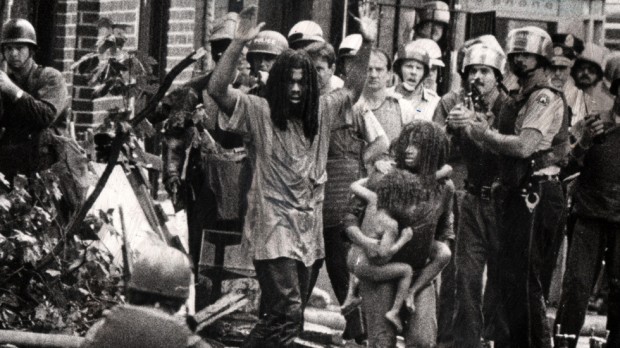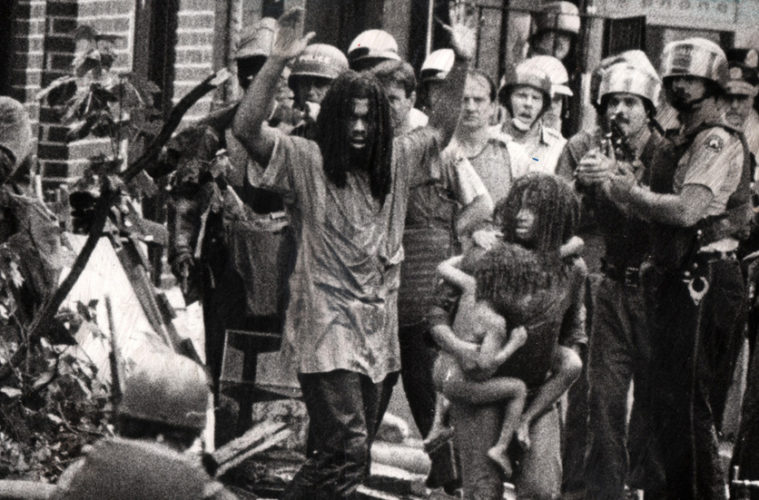The year is 1985. The extremist African-American liberation group MOVE has headquartered itself in a West Philadelphia house in a densely populated neighborhood on Osage Ave, a neighborhood that would be burned to the ground by the Philadelphia Police Department. Let the Fire Burn is a fascinating new documentary by Jason Osder using only found footage, telling this amazing story through taped depositions, news reports and the public access-broadcast footage of a commission to understand what happened on Osage Ave.
We know a little about MOVE, a group that raised their children naked in farm-like compounds advocating a “back to nature” life style. Essentially they are framed for the murder of a police officer in a 1978 shoot out and the standoff leads to an investigation of excessive force after footage surfaces (and like all investigations of excessive force, the cops were found not guilty). MOVE often brandished non-functioning guns and the house, which was the location of the standoff, was demolished by the city despite a court order to retain the crime scene.
We learn that MOVE’s 141 demonstrations yielded 193 arrests and 97 court cases and they are branded terrorists by several figures whom look untrustworthy on film, including Gregory Sambre, the chief of police who ordered the fire bombing of the Osage house. Like Central Park Five (which correctly vilified Ed Koch for vilifying the innocent) the former governor, then Attorney General, Ed Rendell appears complicit in this cover up.

The city evacuates the neighborhood, mostly seen in great news reporting for what it expects to be a 12-hour stand off. Using millions of gallons of water, it attempts to first damage MOVE’s rooftop bunker (that would provide the group with tactical advantage per Sambre). When water and tear gas fail the city, knowing children are also present in the MOVE house, they use an expulsion on the roof and the initial order is to “let the fire burn.”
Osder concludes what this committee and 1996 lawsuit conclude, that the city used truly excessive force — at one point even driving in more ammunition. The burning of the house and neighborhood, like the destruction of the early MOVE house, suggests there’s something greater to hide. The ends did not justify the means, destroying an entire city block for what was essentially a police cover up and uprooting lives in the process. Later rebuilt, the new Osage housing would be later condemned in 2000 due to the poor quality of the construction and materials.
Documentaries like this are essential in arrogating past materials to tell the whole story. Complete and definitive, it paradoxically is fresh, while remaining grounded in the past. It contains no new footage and no voice over narration, but the voices that speak to us, speak in present tense and the results are profound. What happened on Osage Avenue cannot be undone, nor will Osder allow the participants to tell us what they would have done differently. The facts of the times are in some passages a little confusing, as they ought to appear. This is documentary, perhaps in its purest form.

